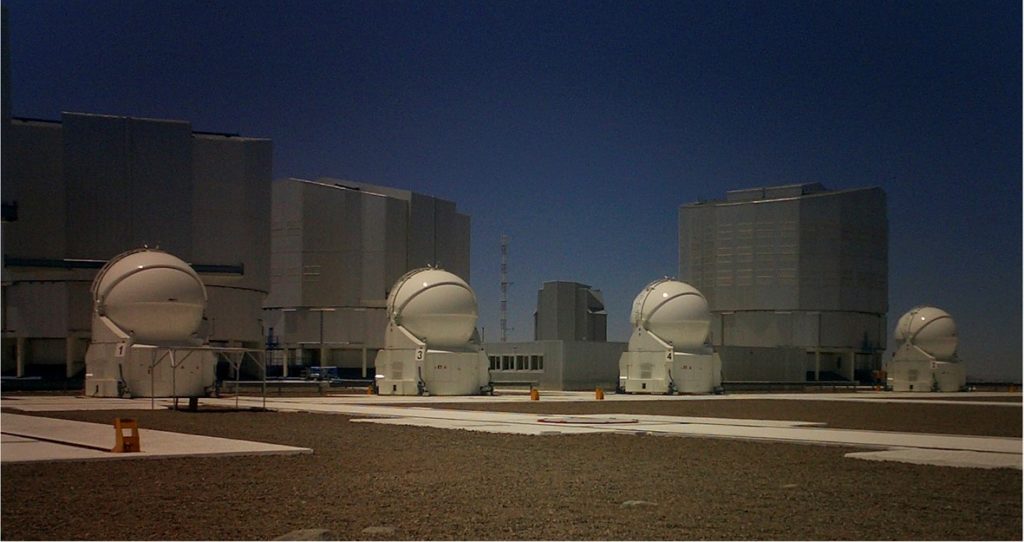The leading French company ALPAO will supply all the deformable mirrors to equip the auxiliary telescopes that form part of ESO’s Very Large Telescope Interferometer (VLTI) array at the Paranal Observatory in Chile.
In 2018, the VLTI will undergo a major improvement with the installation of the New Adaptive Optics Module for Interferometry (NAOMI) on each of its 1.8-meter Auxiliary Telescope (AT). This long-waited upgrade will allow the astronomers to reconstruct exquisite images of even fainter objects, like young pre-main sequence stars and their protoplanetary discs, post-main sequence mass-losing stars, and active galactic nuclei.
The ALPAO deformable mirror is the masterpiece of the NAOMI system. It will change shape about 500 times per seconds in order to actively counteract the damaging effect of wind and turbulences on the image quality. Interestingly, the ALPAO deformable mirror (DM) is also able to move the star further away, few times per second, in order to monitor the brightness of the sky itself. This technique, called ‘chopping’, is absolutely needed for the forthcoming MATISSE instrument which will observe the far infrared light.
Two of-the-shelve deformable mirrors from ALPAO underwent four months of intensive testing at the Institute for Planetary Sciences and Astrophysics of Grenoble (IPAG, France). The results validate the suitability of the ALPAO mirrors to fulfil the needs of NAOMI, especially the requirement of a large amount of deformation. The procurement is now on-going for the three remaining pieces (four telescopes plus one spare). The first light with the four AT equipped with NAOMIs is expected in mid-2018.



